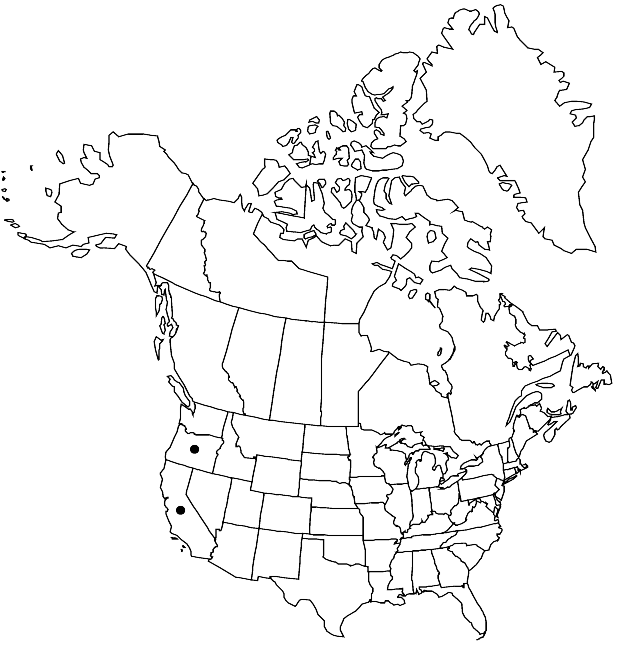Arabis oregana
Rhodora 43: 349. 1941.
Perennials; (caudex simple or branched, with some persistent petiolar remains); sparsely to moderately pubescent, trichomes bulbous-based, simple and long-stalked, forked, (to 2 mm), these often mixed with fewer 3-rayed, stalked stellate ones. Stems simple or few from base (caudex), erect, unbranched distally, (0.6–)1.7–4.5(–5) dm, (usually pubescent throughout, rarely subglabrate, coarsely hirsute, trichomes simple, mixed with forked ones). Basal leaves: petiole 0.5–2(–3) cm, (ciliate); blade oblanceolate to obovate, (1–)2–5(–9) cm × (5–)8–18(–22) mm, margins entire or repand to dentate, (ciliate), apex obtuse, surfaces pubescent or glabrous, trichomes simple and forked, sometimes mixed with 3-rayed stellate ones. Cauline leaves 3–6 (or 7); blade oblong, 1–3(–6) cm × 2–7(–15) mm, base not auriculate, margins entire or dentate, (ciliate or not), apex obtuse, surfaces pubescent as basal leaves or glabrous. Racemes simple, (dense). Fruiting pedicels ascending to erect, 5–10 mm, (pubescent or glabrous). Flowers: sepals (purple), oblong, (5–)6–8 × 1.5–2 mm, lateral pair saccate basally; petals purple or pink, spatulate, (10–)12–15(–16) × (3–)4–5 mm, apex obtuse; filaments (4–)5–8 mm; anthers narrowly oblong, 1.2–1.8 mm. Fruits erect or nearly so, slightly torulose, (3–)4.5–6 cm × 1.5–2 mm; valves each with prominent midvein; ovules 24–30 per ovary; style 0.5–1 mm. Seeds narrowly winged distally or not winged, oblong, 1.8–2.2 × ca. 1 mm; wing ca. 0.1 mm wide. 2n = 32.
Phenology: Flowering Apr–May.
Habitat: Moist granitic soil, rocky hillsides, chaparrals, steep banks
Elevation: 500-1000(-1400) m
Discussion
Arabis oregana is known from Napa and Siskiyou counties (California) and Jackson County (Oregon).
Selected References
None.
